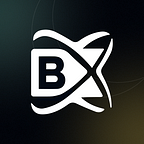Layerzero Development: A full Guide 2024
LayerZero: An Introduction
Interoperability between diverse blockchain networks has become a pivotal challenge amid the quickly changing blockchain ecosystem. LayerZero, a pioneering protocol, can interconnect various blockchain networks effortlessly for LayerZero resolves this issue. This paper goes deep into LayerZero development and applications, offering a comprehensive reference for developers who might want to exploit this technology.
What is LayerZero?
There is a particular protocol known as LayerZero development that allows different blockchains to communicate with each other. Although conventional methods usually include intermediaries dealing with transmitted data, it instead makes use of a decentralized method for safe and quick sharing of said information among other platforms. The protocol allows the smart contracts of one blockchain to communicate or interact with the smart contracts on another blockchain, making it possible for many decentralized applications’ (dApps) written there on, as well as decentralized finance’ written there’(DeFi).
Key Features of LayerZero
Decentralized Messaging: LayerZero uses decentralized oracles and relayers to transfer messages in between blockchains. It helps in getting rid of single points of failure and improved security.
Composable Applications: Developers can utilize LayerZero to create apps that blend several different blockchain services into their dApps,thus increasing their capacities.
Scalability: The protocol is created to accommodate many transactions thereby being good for applications that need scaling.
Flexibility: LayerZero aids a variety of blockchain networks that enable software developers to pick the best network that suits their specific use cases.
How LayerZero Works
An evaluation of LayerZero is presented to show how cross-chain communication can take place:
Step 1: Initiating a Cross-Chain Message
The first thing that happens when you want to send a message or transaction from one blockchain to another is that a smart contract is initiated on the platform that sent it. The Ultra Light Node (ULN) of the source chain then intercepts this message.
Step 2: Message Verification by Oracles
The message is relayed to Oracle network where its authenticity and validity are checked before any transaction can take place. At this juncture, oracles examine different factors to ascertain the genuineness of the message and adherence to security guidelines of the protocol.
Step 3: Relaying the Message
Once the oracles confirm the message, they give it to the relayers who have the accountability to convey messages between source blockchain and the destination blockchain ensuring that the message gets to the end consumer without alteration or any data loss.
Step 4: Message Reception and Execution
When a message is received, the target smart contract is called by the destination blockchain’s ULN to interpret it, in order to accomplish the process of cross-chain communication termination, and thereby achieve the desired operation.
Uses of LayerZero
The blockchain ecosystem benefits significantly from LayerZero’s protocol for interoperability:
Cross-Chain DeFi: Defi networks can use LayerZero for supporting asset transfers and shared liquidities between various blockchains. It supports extra investment options while improving liquidity as more users transact.
NFT Marketplaces: LayerZero aims at making it easier for people to transfer and trade non-fungible tokens (NFTs) across many blockchains so as to promote their usage and commercial viability.
Gaming: Games based on blockchain have the ability to integrate assets and cash for different games across the networks by using LayerZero which creates a more immersive and richer gaming experience.
Supply Chain Management: These kinds of businesses can track products via more than one blockchain network to guarantee there is transparency in supply chain operations and genuineness of those products being moved from one point until they reach final destination.
Benefits of LayerZero
Enhanced Security: LayerZero is making cross-chain communication safer as well as reducing hacking risks and single points of failure by using decentralized oracles and relayers.
Greater Flexibility: LayerZero provides various blockchain networks that enable developers to customize platform options fitting their needs and combine attributes drawn from different blockchains.
Improved Scalability: This particular scheme is designed for a large number of transactions to function quickly and that makes it perfect for applications in demand of extreme scalability.
Cost Efficiency: LayerZero decreases the dependency on many intermediaries and therefore brings down transaction costs and enhances cross-chain operations efficiency.
Interoperability: LayerZero’s ability to enable seamless communication among different blockchains helps the creation of more interwoven and flexible dApps, thereby improving the overall user experience.
Conclusion
LayerZero is a significant boost in the interoperability of blockchains by providing a decentralized, safe, and effective mechanism for linking and joining multiple blockchain networks together. If you follow this development guide, you will be able to create omnichain applications that use the benefits of LayerZero hence enabling other possibilities for dApps and DeFi projects. LayerZero offers tools for developing cross-chain DeFi platforms, NFT marketplaces or blockchain-based games, enabling one to come up with applications that are interconnected, scalable, and flexible. LayerZero benefits the blockchain ecosystem by adding value as it employs a diverse range of techniques to improve security, flexibility, scalability, interoperability and cost effectiveness.
